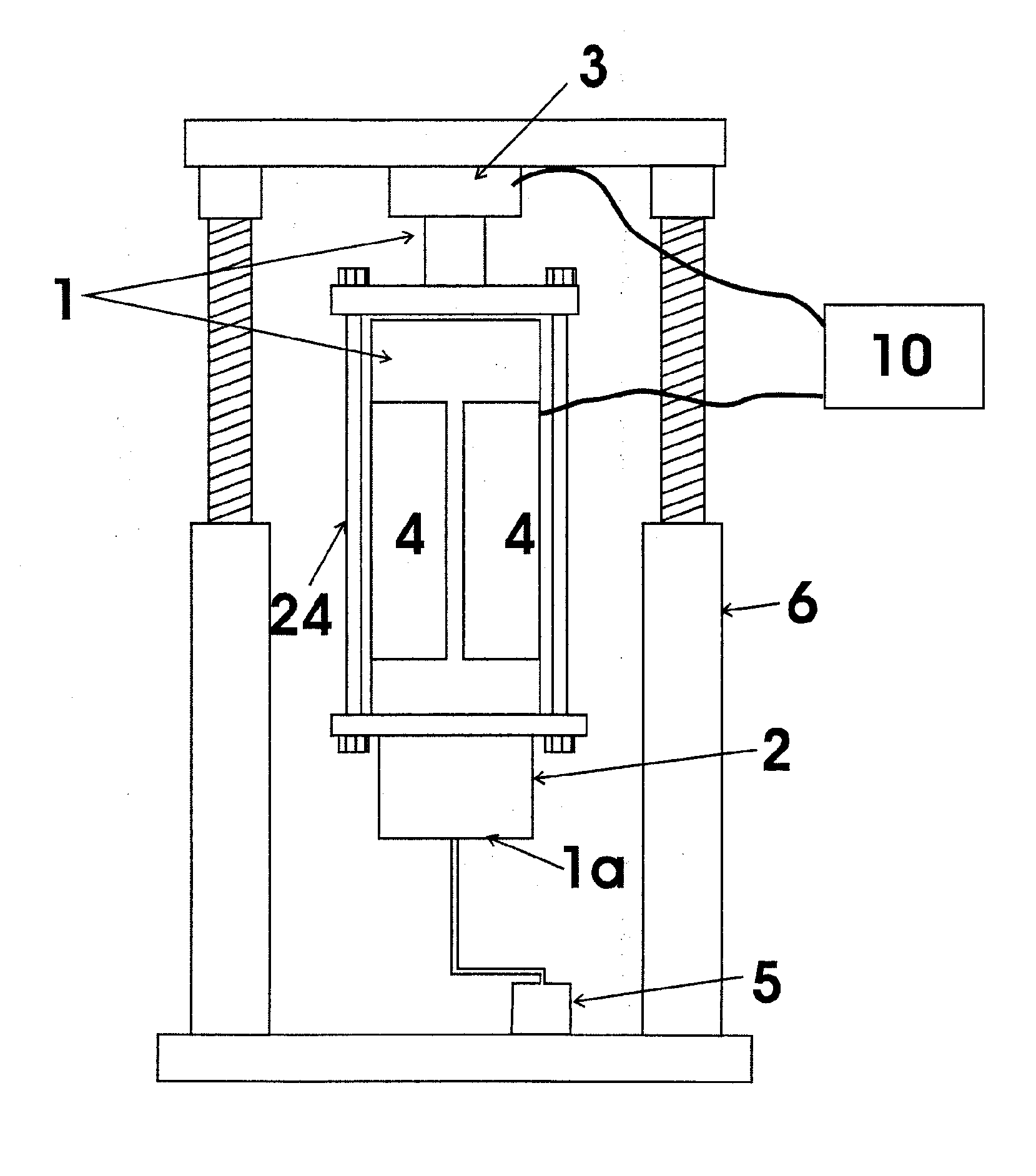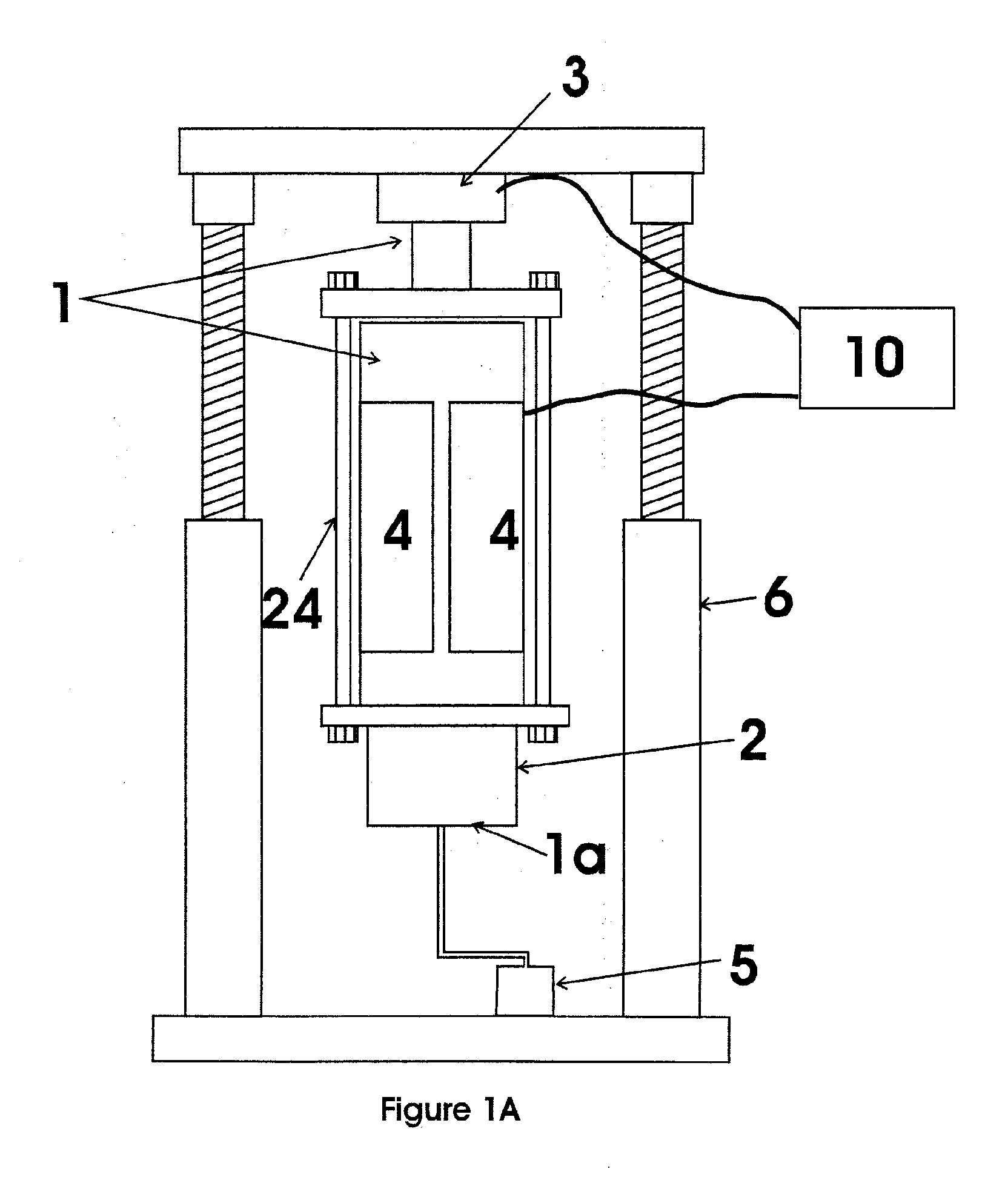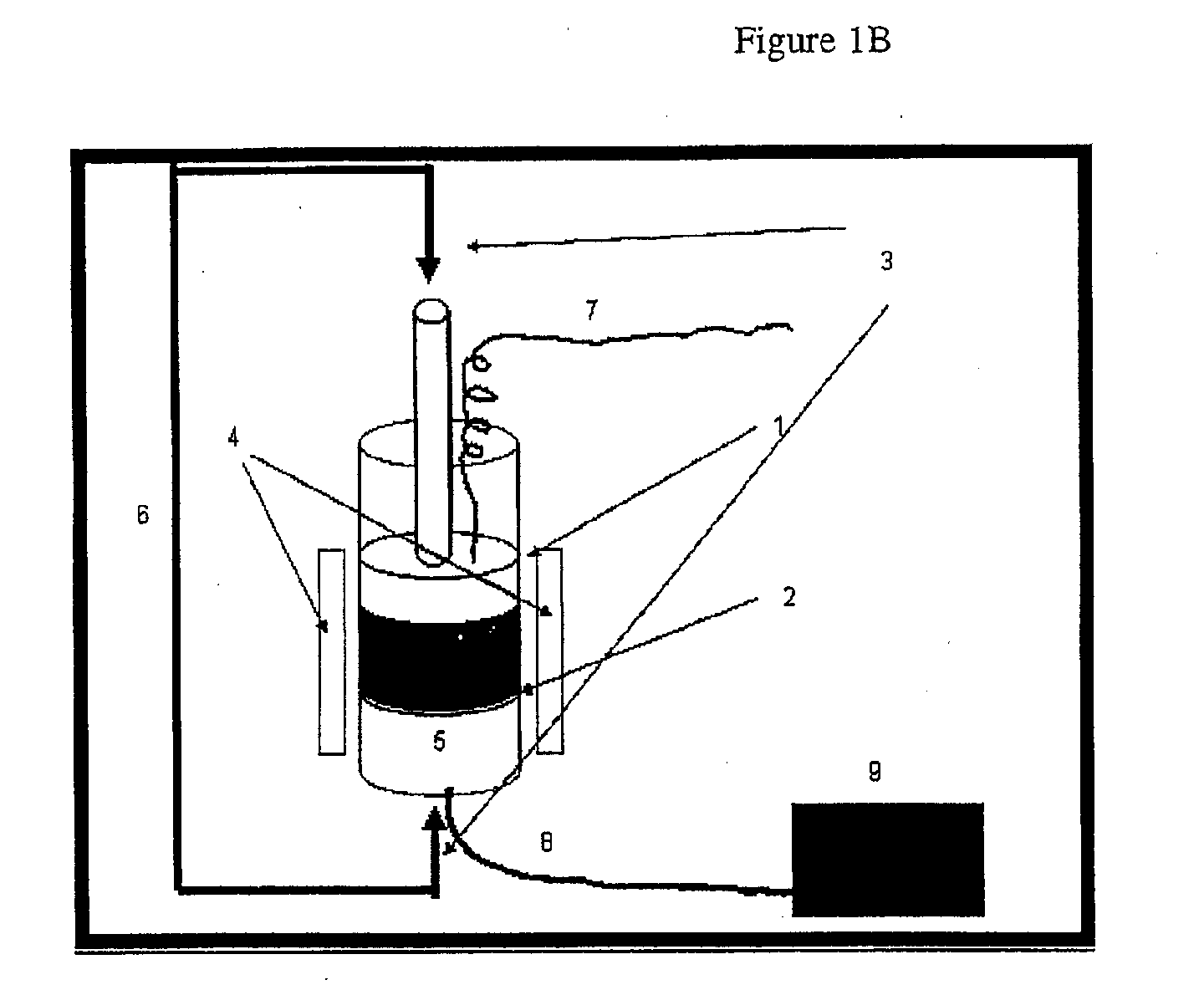Method and apparatus for obtaining heavy oil samples from a reservoir sample
a technology of heavy oil and apparatus, which is applied in the direction of instruments, separation processes, and well accessories, etc., can solve the problems of solvent removal, difficult recovery of oil from hots reservoirs, and inability to completely remove solvents, etc., and achieve the effect of improving quality
- Summary
- Abstract
- Description
- Claims
- Application Information
AI Technical Summary
Benefits of technology
Problems solved by technology
Method used
Image
Examples
example 1
Sample Preparation and Procedure
[0086]Bitumen or heavy oil reservoir rocks (containing approximately 5-15 wt % bitumen and having up to 40% porosity) can be mechanically extracted in a single operation. Typically, about 150 to 200 g of lightly disaggregated oil sand sample (oil sand disaggregated while frozen in a mortar and pestle for 5 minutes) is placed in the extraction cylinder (1) to produce between 1 and 10 ml of heavy oil. The amount of sample used depends on the bitumen and heavy oil richness of the sample and the amount of oil required for analysis. For example, a low oil-saturation or low porosity sample would necessitate a larger sample size to ensure that the required liquid oil volume could be extracted.
[0087]While water addition to the sample is not necessary with frozen wet core samples, the addition of an amount of water (up to 20 volume percent) to the top of the samples can increase the amount of oil recovered by the procedure, particularly from dried out samples....
example 2
[0088]1. Load an appropriate amount of crushed reservoir sample into the cylinder.
2. Position the piston above the top of the cylinder.
3. Place a water collection vial below within the collection chamber of the ME device.
4. Turn on the heating system to pre-heat (typically 40° C. to 80° C.) the device for approximately 10 minutes.
5. Position the piston at the top of the sample so that it is just in contact with the sample, applying minimal force to the sample. At this point, between about 1 and 10 ml of water will quickly flow into the water collection vial if water has been added to the sample. The piston should be held at this position for several minutes.
6. Increase the load applied by the press to approximately 25 MPa and hold for several minutes. Additional water will flow out if water has been added, otherwise for unwetted native samples only drops of water may be collected.
7. The water sample may be large enough for detailed chemical or isotopic analysis of th...
example 3
Oil Extraction
[0089]The following description relates to an example of one set of conditions that may be applied to extract oil samples from a typical western Canadian tar sand (oil sand) reservoir sample of high porosity.
1. Replace the water collection vial with an oil collection vial that has been weighed.
2. Increase the applied load of the press to about 50 MPa (absolute stress) and hold for 5 minutes. Oil may start dripping into the collection vial at this pressure for rich samples and / or samples containing less viscous oil.
3. Increase the applied load of the press to 75 MPa (absolute stress) and hold for a time interval longer than that in Step 2 (for example, 10 minutes). Increase the applied load of the press to 100 MPa (absolute) and hold for a time interval exceeding that of Step 3 (for example, 15 minutes).
4. Increase the applied load of the press to 25 tons (125 MPa) and hold for a time interval greater than that of Step 4 (for example, 15 minutes).
5. Turn off the heating...
PUM
| Property | Measurement | Unit |
|---|---|---|
| pore size | aaaaa | aaaaa |
| thickness | aaaaa | aaaaa |
| lengths | aaaaa | aaaaa |
Abstract
Description
Claims
Application Information
 Login to View More
Login to View More - R&D
- Intellectual Property
- Life Sciences
- Materials
- Tech Scout
- Unparalleled Data Quality
- Higher Quality Content
- 60% Fewer Hallucinations
Browse by: Latest US Patents, China's latest patents, Technical Efficacy Thesaurus, Application Domain, Technology Topic, Popular Technical Reports.
© 2025 PatSnap. All rights reserved.Legal|Privacy policy|Modern Slavery Act Transparency Statement|Sitemap|About US| Contact US: help@patsnap.com



